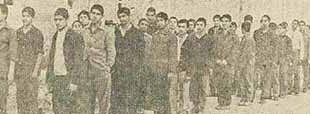During the Iran-Iraq War (1980-1988), the MEK made a controversial decision to align itself with Saddam Hussein’s regime. The organization formed a paramilitary wing, the National Liberation Army of Iran (NLA), which carried out cross-border attacks against Iranian forces. This alliance with Iraq, Iran’s bitter enemy, significantly tarnished the MEK’s reputation among the Iranian populace, who viewed the group as traitorous for siding with a foreign adversary during a time of war.
Post-War Period and Political Repositioning
After the end of the Iran-Iraq War, the MEK faced a new set of challenges. The organization’s close ties with Saddam Hussein’s regime became a liability, particularly after the 2003 US-led invasion of Iraq, which led to the downfall of Saddam. The MEK’s paramilitary presence in Iraq became increasingly untenable, and the group was forced to disarm under US pressure.
Following the disarmament, the MEK shifted its focus from armed struggle to political advocacy. The organization sought to rebrand itself as a legitimate opposition movement, advocating for democracy and human rights in Iran. The MEK’s leadership, now based in Albania, began lobbying Western governments and international organizations to support their cause.

